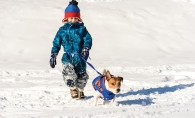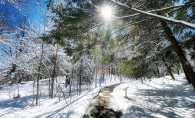Cycling suffered a public relations blow when champion cyclist Lance Armstrong was stripped of his seven Tour de France titles after being charged with doping. Luckily, the sport is resilient. Competitive cycling continues to grow in popularity as baby boomers take up cycling to spare their running- and aerobics-traumatized knees. Cycling is increasingly popular for economic reasons, too: higher gas prices have prompted people to travel on two wheels out of necessity. And the sport is now one of the cleanest. “Cycling as a sport cleans up really well,” Minnetonka High School coach Dale Sedgwick says. “Cyclists are tested [for drugs] more than any other athlete, but other sports eventually have to face the same thing.” Renewed interest in cycling among adults is trickling down to kids. The Minnesota High School Cycling League was organized in 2010 to address students’ growing enthusiasm for cycling; Minnetonka High School students flocked to the new competitive mountain biking program. MHSCL founder Gary Sjoquist asserts that the team will double in size this year, amounting to 300 young cyclists at the starting line. “[Cycling] is now a club sport, like soccer was a few years ago,” he says. “We’re hoping that someday [cycling] will become a real high school sport.” Minnetonka Community Education stepped in to hire a coach and found Sedgwick, a professional cyclist in 1990s who raced all over France, Italy, the United States and New Zealand. “My focus is on training our students to become faster cyclists,” he says. “The first year we concentrate on getting bikes that fit. We take a long-term view; it’s a progressive sport. First we get them riding, then we teach them technique.” Sedgwick trains the cyclists on single-track trails around the city, mixing in some road riding to build endurance and leg strength. As the season (September–October) approaches, the cyclists train as mountain bikers in the woods. The training rides get progressively harder, culminating with an 800-foot climb. “It’s not so much about racing as it is about being able to ride with kids your own age and discovering a new way to be active outdoors,” Sjoquist says. “Everybody makes the team, everybody scores points for the team, and both boys and girls are included,” Sjoquist says. “Parents, administrators and teachers get involved, too. There is always a die-hard mountain biker somewhere in there. It’s also pretty cool when you see the boys cheering the girls on and the girls cheering the boys on—and the parents cheering everyone on!” There are four to five races per season, each of which requires 60 to 70 volunteers. Sjoquist acts as the race director. The races are open to the public, and Sjoquist cleverly enlists their help in breaking down the course and cleaning up after a race. “It’s a cool sense of community,” he says. Once the students start racing, they inspire their parents and siblings to ride, too. “We’re creating cycling families,” Sjoquist says, adding that many parents say they now have an activity to do with their kids. Sjoquist likes the idea of exposing kids to the whole range of cycling by creating opportunities for more people to become cyclists. According to Sedgwick, “[We] work with all abilities and motivations; some kids just want to have fun, and then we have more serious racers. We design practices to meet the needs of both those extremes, with everyone in between.” To join, simply contact Minnetonka Community Education and sign up. A prospective rider needs a bike and a helmet and “we’ll take it from there,” Sedgwick says. “Hopefully [the kids] will enjoy cycling enough to make it be a lifetime sport.”
Menu
From the August 2013 issue
High School Cycling League Builds Cycling Families
Minnetonka students learn to race on two wheels.
Photo by:
Minnesota Cycling League









